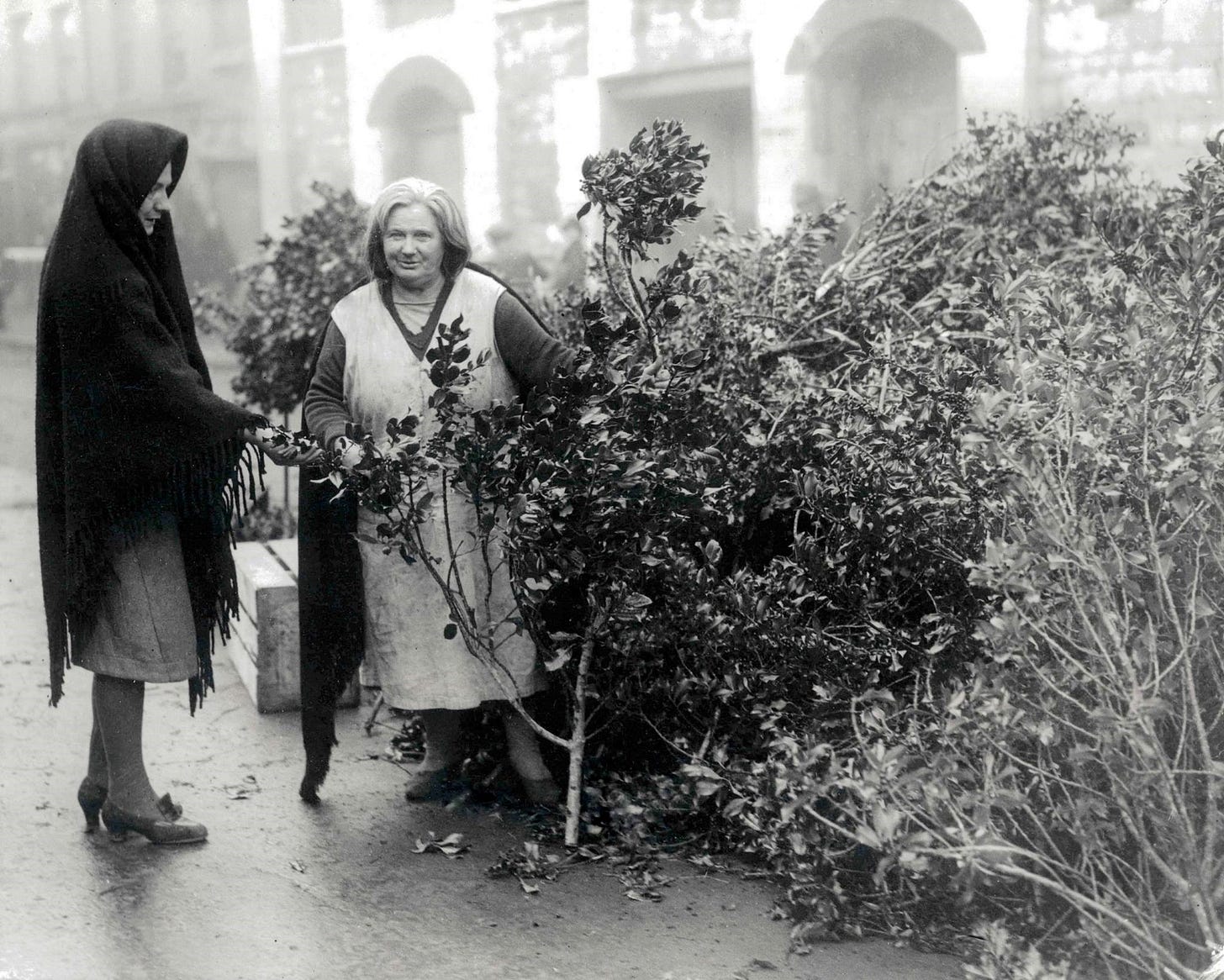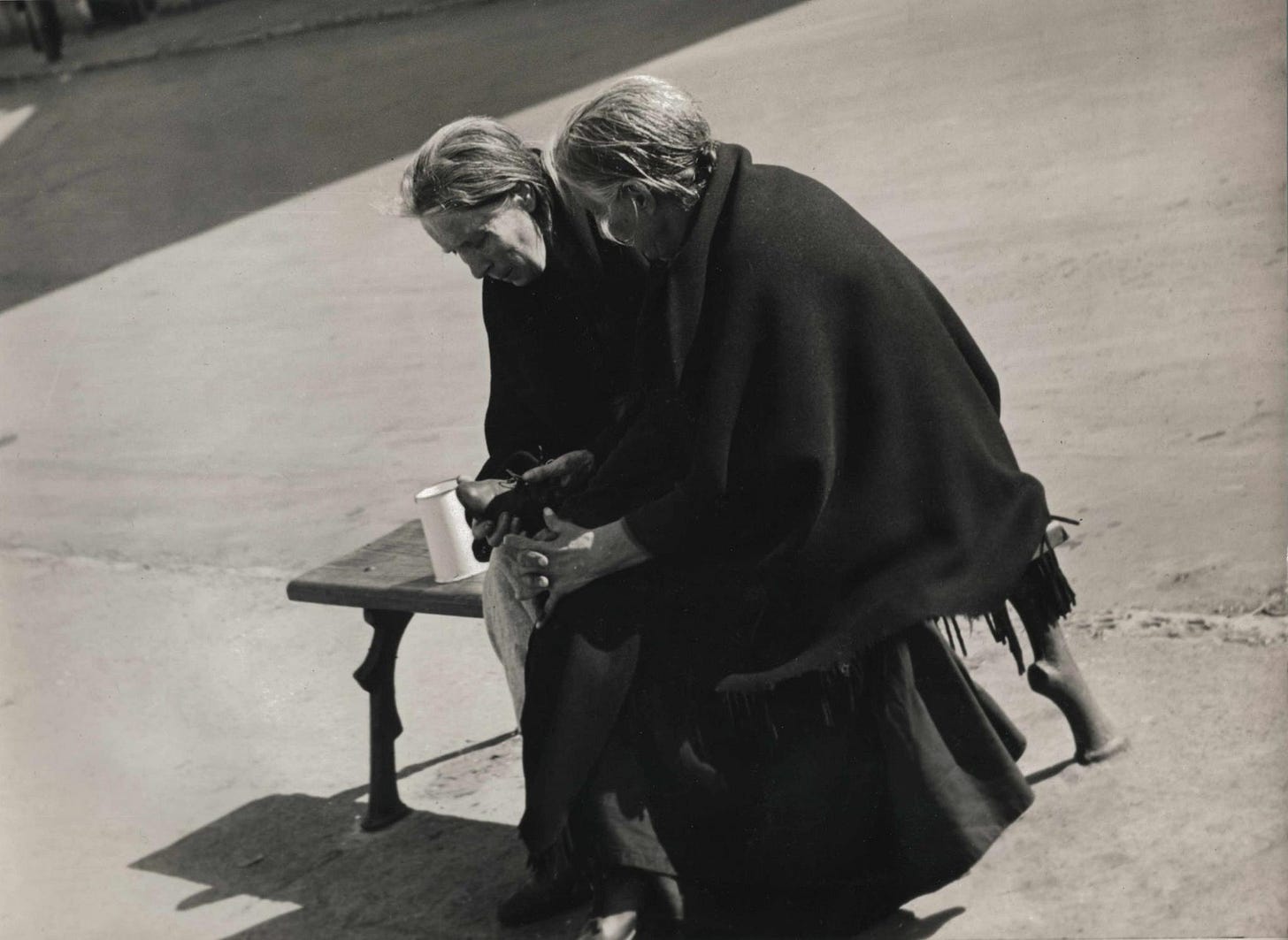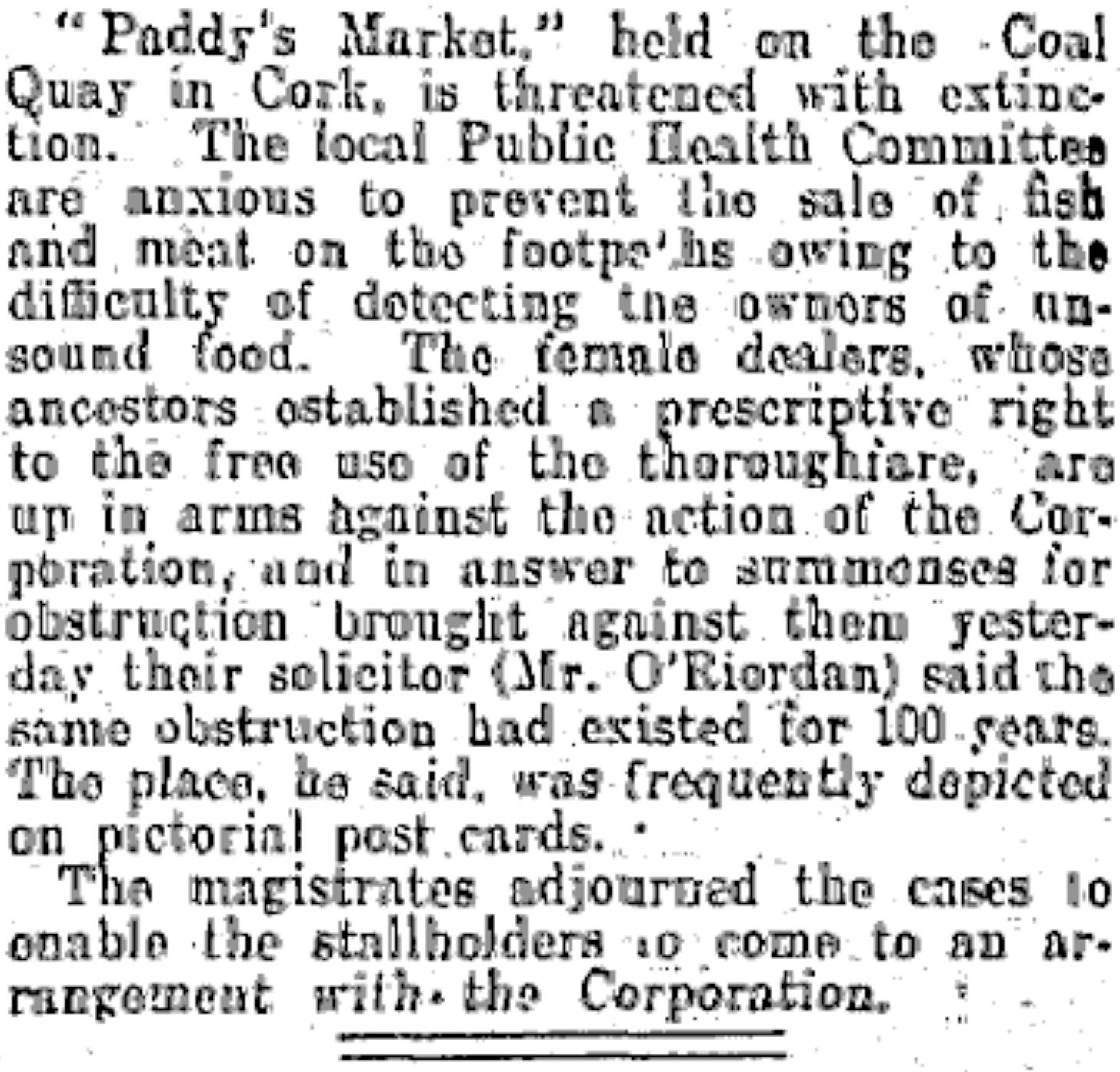Cornering the Market on Cornmarket
Farmer’s markets and Christmas markets might be all the rage now, but the Coal Quay’s famous Shawlies once had a fight on their hands to keep their right to trade.

In the Cork of 2021, trading outside has been seen as a solution to the hospitality sector being able to survive the Covid-19 crisis.
To see our city streets full of people dining al fresco, the reduction of traffic on the street and the increased pedestrianisation of the city have all been positively welcomed.
But if we look back almost a hundred years to the Cork of the 1920s, there was a slightly different attitude to those who traded on the thoroughfares of the city.
In fact, it is quite ironic that the present-day “bricks and mortar” in situ businesses are clogging up the pathways of the city, for it was the established shop-owners of a hundred years ago who argued that street traders were a nuisance, selling their goods on the footpaths and roads of the inner city.
18th century Cork had quite a few small, open-air food markets which were regulated by the Corporation. Many of these sprawled out from the medieval spine of the city at North Main Street towards what is now Cornmarket Street. In addition to the markets, peddlers could set up stalls and sell for no more than 30 minutes without having to pay the Corporation for the luxury.
By the 19th century, Cork’s prosperity from international trade to the British colonies enabled the city to grow, economically and structurally. This saw the areas of Grand Parade and St Patrick’s Street become more affluent areas of trade, while the area around North Main Street and the Cornmarket/Coal Quay area became a less desirable location. In the early 1840s, the Corporation, now with a Catholic Irish majority, sought to elevate and improve the conditions around the Coal Quay and Cornmarket Street.
Building markets
In 1843 the Corporation developed three new markets, two on the southside of the Lee: Douglas Street got a milk and potatoes market, while Barrack Street gained a small milk market, and the third market, St Peter’s Market, was constructed between Cornmarket Street and North Main Street, the site of which is now The Bodega and Mr Price's supermarket.
St Peter’s Market was a meat market locally known as the Irish or Paddy’s Market so as not to be confused with the more affluent English Market on the Grand Parade. Around this time an extension was added to the existing Bazaar Market, which sold clothes, textiles and fabrics, on the southwest side of Cornmarket Street, which today houses The Cornstore restaurant and The Loft furniture and carpet outlet.
Built at the cost of £3000, St Peter’s Market opened its doors two years before the potato blight hit our shores to devastating effect. The new market survived the famine and went on to thrive somewhat until the end of the 19th century.
At the turn of the next century, the fortunes of Cornmarket Street and the markets went into decline. Newspaper reports in 1906 state that St Peter’s Market had become rundown and semi-derelict due to the price of leasing a stall, which traders deemed too costly to run a profitable business.

Shawlies
Traders in both the Bazaar Market and St Peter’s brought their wares to the street to try to increase their sales, leading to a decline in the indoor markets of the area but a rise in already overcrowded street trading. As war was taking hold of the continent, St Peter’s was conscripted to the war effort by way of becoming a munitions factory. This only sought to exacerbate the “problem” of street trading in the area: it is now that we start to see local shopkeepers and business owners taking issue with the female traders or “Shawlies” selling their produce and wares in the open streets.
Photographs of the area at the time illustrate the scale of trading on Cornmarket Street. One can almost hear the noise of the market emanating from the pictures. The clatter of boxes, the squeaking of baskets, the shouting traders trying to entice a passer-by, the gossiping between traders and punters. Once these images are in your head the smells start to be reconstructed, the dank musty odours of the second-hand fabrics and clothes, the funk of vegetables that are about to turn and the perpetual stench of an unsanitised city street.
The main objectors to street traders were the shopkeepers and business owners of the vicinity, the most prominent of which would have been the Musgrave brothers. Originally operating out of premises on the Grand Parade, by the end of the First World War they saw fit to relocate to a new purpose-built building on Cornmarket Street.
This premises was to act as a wholesale warehouse with a provisions store on the Cornmarket Street entrance, the facade of this structure exists today as that of TK Maxx and Lidl. The Musgraves did not begin operations from this site till 1925, and one can assume that they did not look too kindly on the casual trading that was happening outside their headquarters. Musgraves’ habitation of the Cornmarket premises coincided with a renewed call for regulation of street trading, not just in Cork but more so in the nation's capital.
The Street Trading Act of 1926 sought to regulate the practice of street trading in urban centres, in response to Dublin city shop owners taking issue with traders on Grafton Street and other city thoroughfares. The same concerns were brought up in Dublin as in Cork: the blocking of streets, unsanitary conditions and obstructing shop-owners’ ability to trade. The act gave local authorities the ability to create bylaws, gave Gardaí powers to enforce the act, and the relevant government minister the power to make regulations.
In the latter part of the 1920s, Cork was without an elected council: it had been dissolved due to corruption, nepotism and a general inability to operate efficiently.
This led to the appointment of the first city manager Phillip Monahan. Monahan sought to establish bylaws relating to the Street Trading Act as early as January 1929, however the bylaws existed only in theory and were not ratified. Street trading persisted and it was not until 1938 that the Garda chief superintendent wrote to Monahan expressing his desire for the 1926 act to be properly adopted, because obstruction of the streets was the only prosecutable offence.
At this time, street trading on Cornmarket Street was not prohibited, only on the adjoining streets and lanes. Monahan implied that street trading was illegal, when in fact the bylaws for prohibiting trading weren’t passed until 1940. The passing years saw further encroachment on street trading through the enforcement of the act and by the mid-1940s the Cornmarket area was a byword for disorder.
As Susan Marie Martin notes in her thesis on the Shawlies, by the mid-1950s our present-day nostalgic view of the Coal Quay began to be established. This time coincided with the demolition of tenements in the Middle Parish. New Corporation housing estates in Gurranabraher and Ballyphehane became home to those who lived and traded in and around the city centre.
Supermarkets vs Shawlies
The construction of Ballyphehane on what was a large area of market gardens led to the reduced availability of locally-sourced fresh produce for the traders. The early 1960s also saw the arrival of a new method of shopping, the supermarket, the establishment of which was spurred on by none other than the previous neighbour of the Shawlies, the Musgraves.
While there is no one reason for the demise of street trading in the Cornmarket area it should be noted that the conservative middle-class nature of Ireland of the 1920s led to the vilifying of street traders of the Coal Quay and Cornmarket area.
The street traders in this area, predominantly uneducated women, often widowed by war, disease or alcoholism, sought to find subsistence for their families by trading openly on the streets.

Some did this legally with permits, whereas others did not, perhaps lacking the means. The authorities’ desire to gentrify the city paid little heed to the issues that created the circumstances that led to illegal street trading. Instead of demonising the women who sought out a meagre existence in street trading, the authorities would have been better suited to deal with the socio-economic issues affecting city dwellers, like education, housing and employment.
To this day, the Coal Quay remains Cork City Council’s designated outdoor trading area, although it is much more tightly controlled than it was before the passing of the 1940 bylaws: you must apply for a trading licence to operate there, although some families who are descendants of the original Shawlies have fought for and won lifelong trading rights on Cornmarket Street and Kyle Street.





